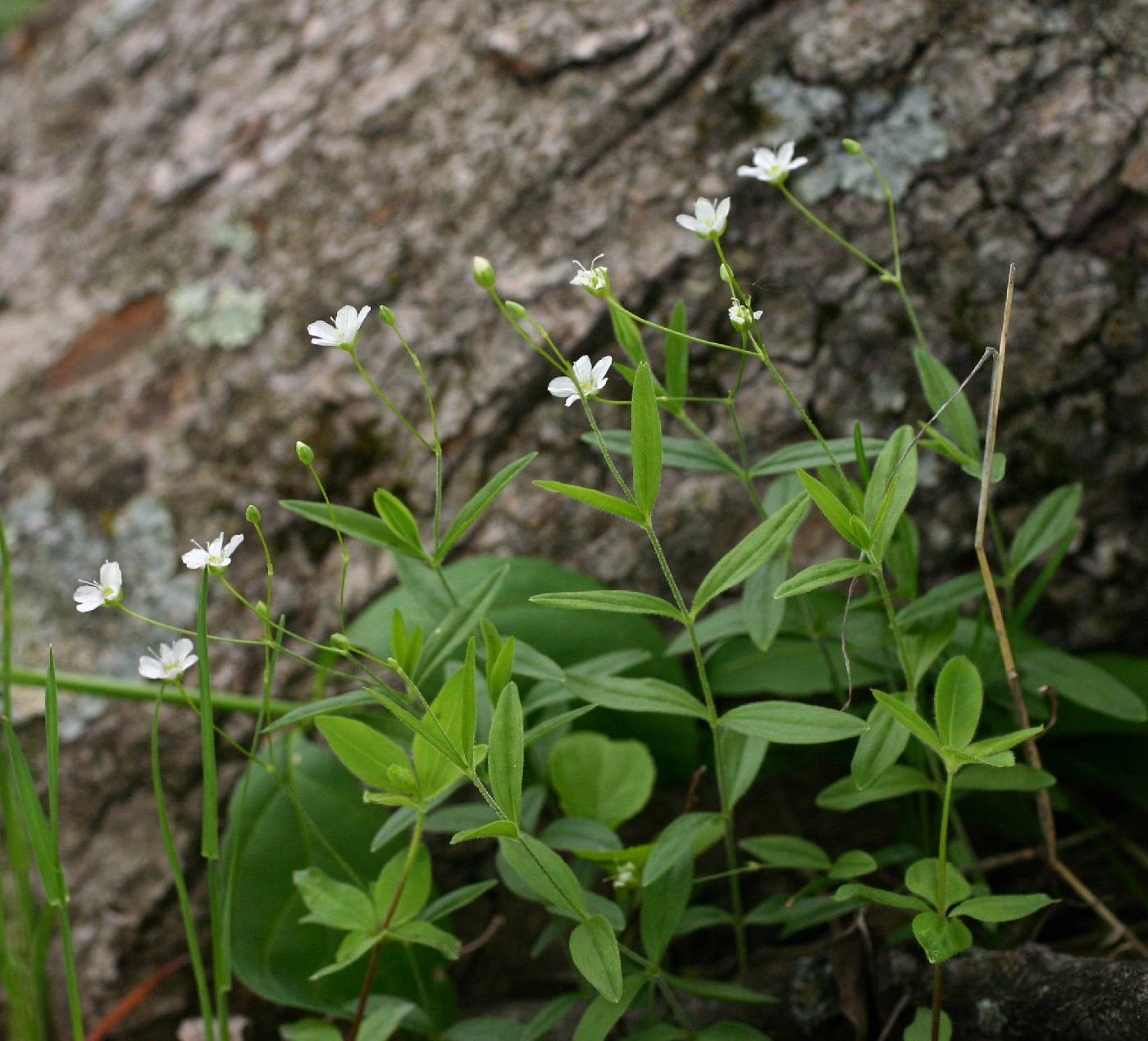Moehringia
|
Family: Caryophyllaceae |
Herbs, annual or perennial. Taproots slender, rhizomes slender or absent. Stems prostrate or ascending to erect, simple or branched, terete or angled. Leaves not connate, petiolate or sessile, not congested at or near base of flowering stem; blade 1-3(-7)-veined, lanceolate to elliptic or ovate to broadly ovate, not succulent, apex acute or obtuse. Inflorescences terminal or axillary, open cymes, or flowers solitary; bracts paired and foliaceous, or smaller and mostly scarious. Pedicels erect or recurved in fruit. Flowers: perianth and androecium weakly perigynous; hypanthium minute, disc-shaped; sepals (4-)5, distinct, green, ovate to obovate, 1.7-6 mm, herbaceous, margins white, scarious, apex obtuse or acute to acuminate, not hooded; petals (4-)5, white, not clawed, blade apex entire; nectaries as fleshy lobes at base of filaments opposite sepals, ca. 3 times width of filament, connate proximally into basal disc; stamens 10, occasionally 8, arising from nectariferous disc; filaments distinct; staminodes absent; styles 3, filiform, 1.5-1.8 mm, glabrous proximally; stigmas 3, linear along adaxial surface of styles, minutely papillate (30×). Capsules broadly ovoid to subglobose, opening by 6 revolute teeth; carpophore absent. Seeds 2-6, reddish brown to blackish, ellipsoid to reniform, laterally compressed, shiny, smooth to minutely tuberculate, marginal wing absent, appendage white, ± elliptic, spongy. x = 12. |

